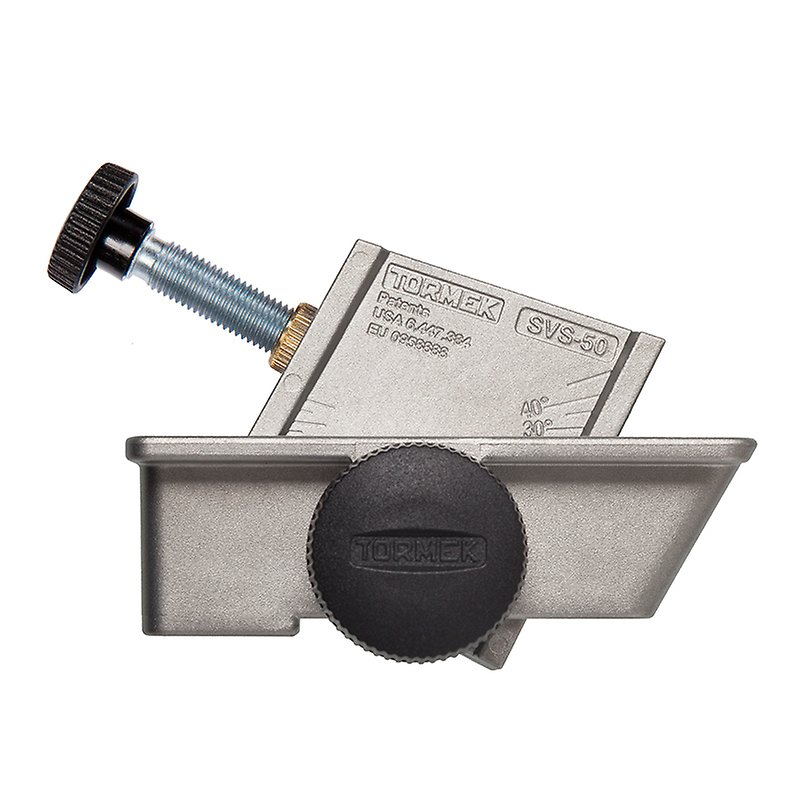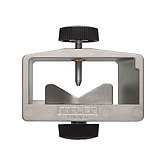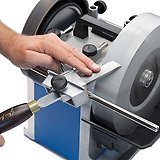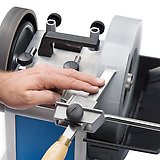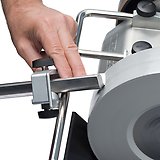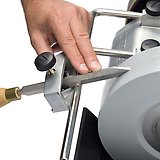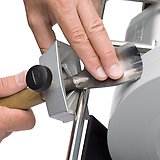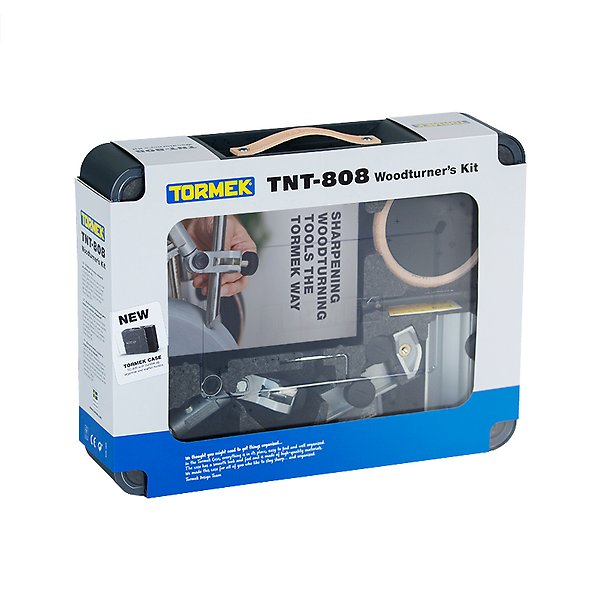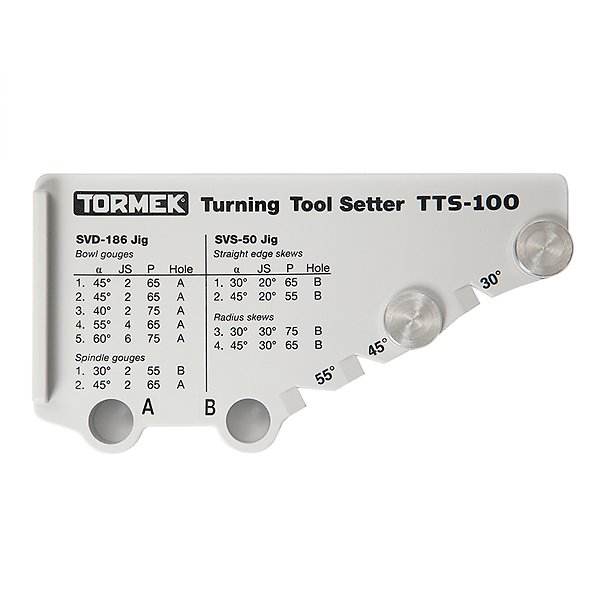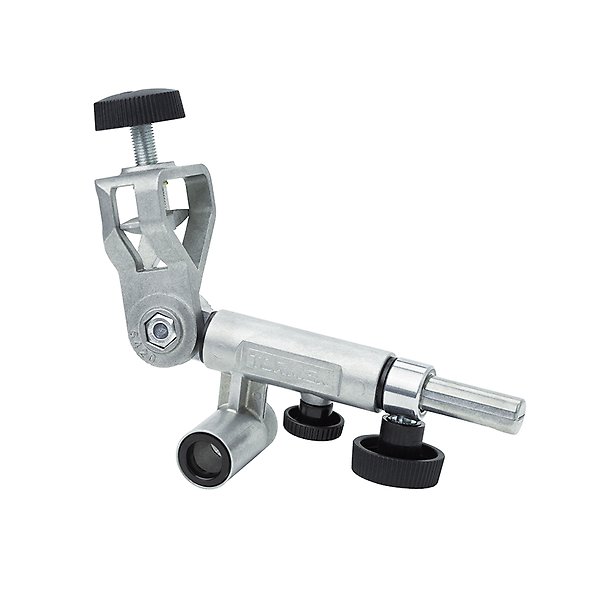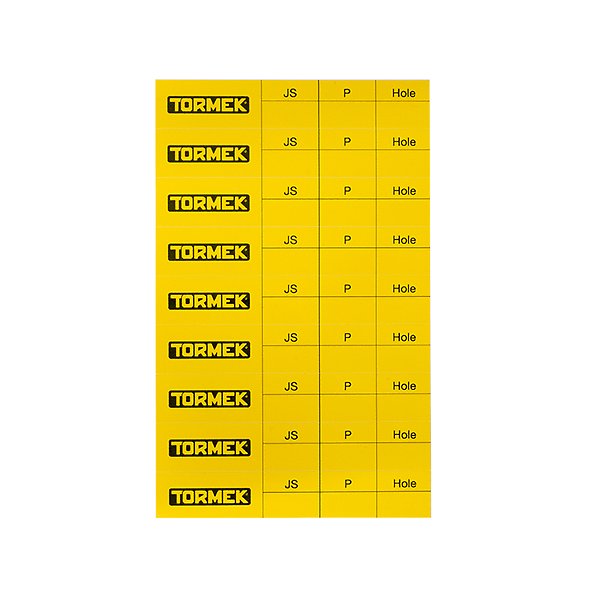- Products
- Grinding Jigs
- SVS-50 Multi Jig
SVS-50 Multi Jig
Like two jigs in one
This jig is called the "Multi Jig" for a very good reason. It consists of a housing with two interchangeable seats for different types of tools; the open seat and the closed seat, which practically gives you two jigs in one. You can use the SVS-50 Multi Jig to sharpen straight and round-edged woodturning chisels, as well as parting tools, roughing gouges and woodcarving gouges and chisels.
Overview
Why SVS-50 Multi Jig?
- It's like two jigs in one – sharpen all your woodturning chisels, parting tools, roughing gouges and more.
- Easy to use – just turn the jig over to grind the second bevel without resetting the jig.
- Includes PL-01 Profile Labels for easy setup and precise repeatability.
- Works with both Tormek T-4 and Tormek T-8, as well as older models
SVS-50 Multi Jig for woodturning chisels
The closed seat allows you to sharpen the vast majority of skew chisels with precision, regardless of whether they have a rectangular or rounded blade and a straight or rounded edge. The tool is mounted vertically in the center of the jig, so you only need to mount the tool once to sharpen two sides. When you've finished one side, turn the jig upside down and then grind the tool to a symmetrical shape.
You can also sharpen chisels with oval cross-sections thanks to a unique and patented design, as well as your chisels with rectangular blades. The jig straightens the chisel so that it's parallel to the universal support, allowing you to sharpen both straight and rounded edges. Maximum woodturning chisel width is 32 mm (1.3").
SVS-50 Multi Jig for roughing gouges, parting tools and wide carving gouges
The open seat, where the tool is mounted with the top screw, is best used for tools with an edge across the longitudinal direction. It's also ideal for sharpening woodturning parting tools, roughing gouges and wide carving gouges. Both the open and closed seat are mounted using a bottom screw, which also locks it at the selected angle.
Sharpening woodturning tools – the simplest setting
When sharpening woodturning tools, we strongly recommend using the SVS-50 Multi Jig together with the TTS-100 Turning Tool Setter. Doing this allows you to easily and accurately repeat the shape and angle over and over again. You'll save time and increase the lifespan of your tools, as you only remove a minimum amount of steel every time you sharpen them.
Water-cooled sharpening on a Tormek gives you a very sharp edge that also lasts longer. A really sharp chisel cuts easily and gives the wood a very smooth finish. Often you don't need to sand it afterwards.
Re-shape your tools with the SVS-50 Multi Jig
Do you have a new woodturning tool and need to remove a lot of steel to change its profile? The BGM-100 Bench Grinder Mounting Set will allow you to use the SVS-50 Multi Jig on a bench grinder too. But you have to be careful not to overheat the edge here. When you've completed the initial rough sharpening on the bench grinder, you then switch to the Tormek machine and give the edge its final sharpness.
Specs and details
Weight
Shipping weight 0.45 kg (0.99 lb)
Color
Gray/black
Material
Precision-cast zinc, black composite
Warranty
2-year warranty

Video
Introduction: SVS-50 Multi Jig
Watch this short introduction on how the SVS-50 Multi Jig works.
Tormek Live Sharpening Classes
Wolfgang and Sébastien demonstrate how to use the SVS-50 Multi Jig to sharpen woodturning tools.
Included in the box
The SVS-50 Multi Jig comes fully assembled and ready to use.
- Instructions for the SVS-50 Multi Jig
- PL-01 Profile Labels with instructions (1 sheet of 9 labels)
